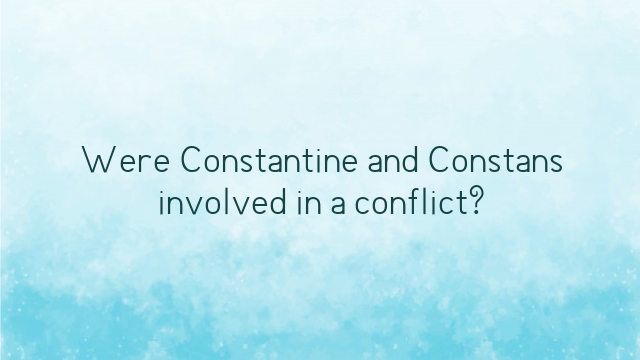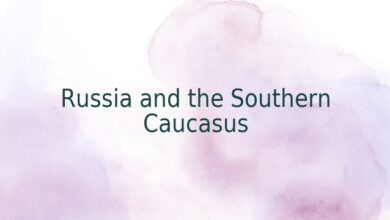
A Constantine and a Constans were involved in a conflict.
Not Constantine the Great (Constantinus I, r. 306/310–337) and his son Constans I (r. 333/337–350).
And not Constantinus III (r. 407–411) and his son Constans II (r. 408/409–411).
And not the so-called Kōnstantinos III (r. 613/641–641, he actually reigned under the name Hērakleios neos Kōnstantinos) and his son, the so-called Kōnstas II (r. 641/642–668, he actually reigned under the name Kōnstantinos), nor the latter and his son Kōnstantinos IV (r. 654/668–685).
The conflict occurred between the brothers Constantinus II (r. 317/337–340) and Constans I (r. 333/337–350). Following the death of Constantine the Great on 22 May 337, rule was ostensibly to be shared among his four junior co-emperors (Caesars), these being his three surviving sons Constantinus II, Constantius II, Constans I, and one of his nephews, Dalamatius. However, there was a period of uncertainty, during which Constantius II entrenched himself at Constantinople and arranged for his father’s elaborate funeral. He also obtained the support of the army, and the army massacred Constantine’s two surviving half-brothers and several of their sons, including the Caesar Dalmatius. Then, on 9 September 337, Constantinus II, Constantius II, and Constans I were declared joint senior emperors (Augusti). In terms of their immediate authority, Constantinus II kept the territories which had already been entrusted to him earlier as Caesars, namely the Praetorian Prefecture of the Gauls (including Gaul, Britain, and Spain). Constantius II kept the Praetorian Prefecture of the East (including Anatolia, Syria, and Egypt). Constans I kept the Praetorian Prefecture of Italy (including Italy, Africa, the Alpine, Pannonian, and west Illyrian regions). Dalmatius’ share was now divided between Constantius II (who received the Diocese of Thrace) and Constans I (who received the Diocese of Moesiae, perhaps already split into Dacia and Macedonia).
The immediate jurisdiction of Constantine the Great’s junior co-emperors in 335–337:
The division was sensible in terms of geography but ostensibly cheated the more distant Constantinus II of a share, favoring his younger brothers. Perhaps upset over this and seeking redress, or more generally trying to establish his predominance, based on his seniority, over his younger brother(s), Constantinus II invaded northern Italy in April 340. He apparently overran the area, while Constans, then at Naissus (Niš), dispatched troops against the invader. In an ambush near Aquileia, Constantinus II was killed. The territories under his immediate jurisdiction now passed under that of his intended victim, Constans. Constantinus II was declared a public enemy and subjected to damnatio memoriae, as if he had never existed. A little over a decade later, following the murder of Constans himself by a rebel general in 350, as the sole surviving son of Constantine the Great, Constantius II became the sole senior emperor of the Roman Empire.
Constantinus II:
Constantius II:
Constans I:
Dalmatius Caesar:





